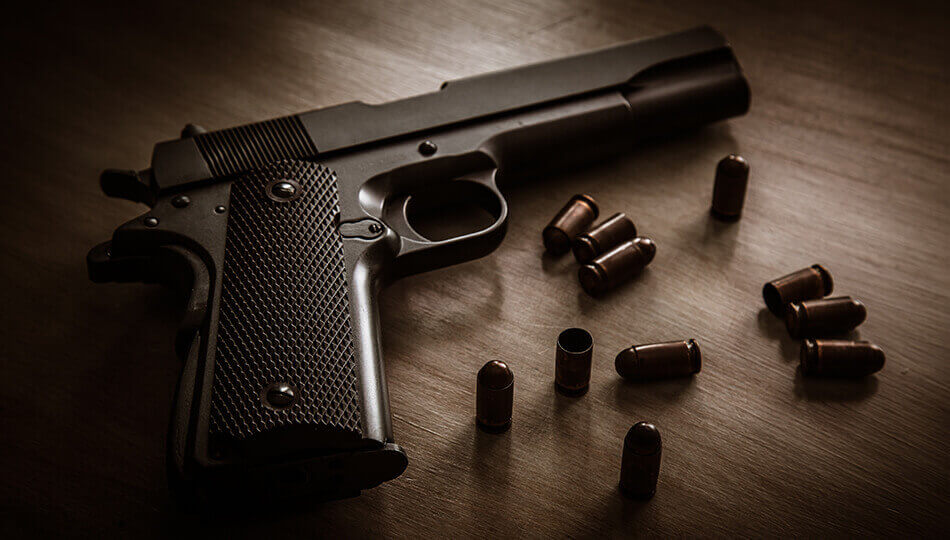
Icon doesn’t quite do the Colt Single Action Army revolver in .45 Long Colt justice. If a Winchester lever action was the rifle that won the West, then the Colt .45 was the pistol that did likewise. It became U.S. Army standard issue sidearm in 1872 and would retain that position for the next 20 years, from the beginning of the “Indian Wars” across the Great Plains through Geronimo’s surrender in 1886 and beyond. Cowboys, gunfighters, gamblers, stage drivers, Native Americans, nearly every western character adopted both the pistol and the cartridge or one of its spin-offs between its introduction in the 1870s and the turn of the 20th century, a dynamic time in U.S. firearms history.
Both the cartridge, the .45 Long Colt, and the pistol would also evolve, serving as the genesis for another icon: the .45 ACP round, and the Model 1911 semi-automatic pistol. This pairing also served as the standard U.S. military sidearm from World War I, WW II, Korea, and Vietnam, up through 1985.
Both .45 Colts – the Colt Single Action Army and the .45 Long Colt, as well as the .45 ACP and the 1911 — are by no means finished two decades into the 21st century. So, let’s take a closer look at the past, present, and speculate some on the future of all four of these items: the .45 Long Colt cartridge, the Single Action Army (SAA) revolver, the .45 ACP round, and the Model 1911 pistol.
The .45 Long Colt/Single Action Army Revolver
The pairing of this cartridge and the “Peacemaker” revolver associated with it wasn’t a chicken-egg proposition. The round and the pistol developed along parallel lines, together.
The revolver was a joint operation between two Connecticut industries: Colt’s Patent Firearms Manufacturing Company, of Hartford, and the Union Metallic Cartridge Company of Bridgeport. Colt began work on the revolver in 1871. It submitted a sample of the revolver to the U.S. Army in late 1872, and the revolver was accepted for purchase by the Army in 1873.
Samuel Colt had been making revolvers since 1836, when his design for the Colt Paterson, a .36 caliber cap-and-ball percussion handgun that employed a rotating five-shot cylinder debuted. The Paterson, manufactured in the New Jersey town of the same name, rendered the single-shot pistol obsolete. Yet only 2,800 Patersons were made– some were in the hands of the recently formed Texas Rangers – when production ended in 1842.
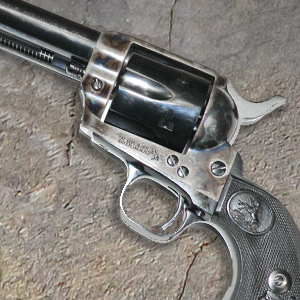 This first foray into gun making bankrupted young Colt and cost him his factory. Not to be thwarted, Colt tried again. He contacted Captain Samuel Walker, of the Texas Rangers, during the Mexican War and suggested that together they might design a better a pistol. Walker had several suggestions to improve Colt’s fragile, difficult to reload Paterson. Colt agreed to Walker’s modifications, and Walker helped Colt get the federal government to buy his pistols. The result was the Walker Colt, a beefy four and a half pound, .44 caliber, six-shot, cap-and-ball percussion revolver with a nine-inch barrel and a trigger guard. With 220 grain bullets driven by 50 grains of black powder, this pistol was almost as deadly as a rifle out to 100 yards. This pistol, and subsequent designs – like the .36 caliber 1851 Navy, the .44 caliber 1860 Army – helped Colt establish a new factory in Connecticut and eventually led to the development of the SAA.
This first foray into gun making bankrupted young Colt and cost him his factory. Not to be thwarted, Colt tried again. He contacted Captain Samuel Walker, of the Texas Rangers, during the Mexican War and suggested that together they might design a better a pistol. Walker had several suggestions to improve Colt’s fragile, difficult to reload Paterson. Colt agreed to Walker’s modifications, and Walker helped Colt get the federal government to buy his pistols. The result was the Walker Colt, a beefy four and a half pound, .44 caliber, six-shot, cap-and-ball percussion revolver with a nine-inch barrel and a trigger guard. With 220 grain bullets driven by 50 grains of black powder, this pistol was almost as deadly as a rifle out to 100 yards. This pistol, and subsequent designs – like the .36 caliber 1851 Navy, the .44 caliber 1860 Army – helped Colt establish a new factory in Connecticut and eventually led to the development of the SAA.
During the Civil War, cap-and-ball revolvers began evolving, moving from percussion-capped cylinders towards bored out cylinders able to hold and fire centrefire primed brass cartridges. Gunsmiths converted cap-and-ball pistols, like the 1860 Army, to hold centerfire cartridges. One such cartridge was the .44 Colt, designed for 1860 Army conversions by Charles Richards, a Colt engineer, and William Mason, a Remington refugee who jumped ship to Colt. Using an outside lubricated 225-grain bullet .451-.454 in diameter, driven by 23 grains of black powder, this round generated a 640 feet per second (fps) velocity. This round debuted in 1871 as a stop-gap measure for while Colt set up to manufacture the Model 1871-72 Open Top revolver, designed for the more powerful .44 Henry Rimfire cartridge. Although the Army bought several thousand Open Tops during its two-year production run, it still wanted a sturdier, more powerful revolver, one that didn’t use outside lubricated bullets that picked up grit, one that had a beefy top strap over the cylinder to hold things together.
In 1871, Richards and Mason began developing this new revolver, teaming up with ammunition engineers at Union Metallic (the company later merged with Remington), to develop its cartridges. The result was the Single Action Army revolver and the .45 Long Colt. Driven by 40 grains of black powder, the bullet traveled at 840 fps generating about 400-foot-pounds of man-stopping wallop. Production of both revolver and ammo began in 1873. The Peacemaker became the sidearm of choice, especially in the West, combining reliability with unmatched pointing and balance. Production in 30 different calibers continued until 1941, the coming of World War II. The two most common were .45 Long Colt and .44-40, a cartridge which could be paired with a Winchester rifle. Only after Colt‘s original patents for the .45 Long Colt expired, did this round become available in a rifle.
Colt wasn’t the only one making revolvers for a .45 cartridge. Smith & Wesson’s Model 1875 Army Schofield revolver was an Army-approved alternate to the Colt, but it created a logistics issue: The S&W revolver used the .45 S&W Schofield cartridge, somewhat shorter than the .45 Colt round. As a result, Schofield revolvers couldn’t chamber the longer .45 Colt. Colt SAAs could chamber the Schofield round, however. So, in 1874 Frankford Arsenal, then the principal supplier of Army ammo, dropped production of the .45 Colt in favor of the .45 S&W round. This resolved the Army’s problem, but there were still plenty of the longer Colt-length cartridges in circulation, so they were designated .45 Long Colt to differentiate between the Schofield and the Colt rounds.
The .45 Colt wasn’t done yet. The Army couldn’t leave well enough alone.
In 1892, the Army adopted the Model 1892 Colt double-action revolver, with a swing-out cylinder, and a six-inch barrel. It was chambered in .38 Long Colt, a round developed in 1875. This 150-grain, black powder-propelled, round-nose bullet left the muzzle at 708 fps, and produced only 157 ft.-lbs. of knockdown energy – compared to the .45 Colt’s 400 ft.-lbs.
In 1899, following 1898’s Spanish-American War, Spain ceded her Philippines land holdings to the U.S., including the Moro territories in the southern Philippines. The Moros – derived from “Moors,” the Spanish term for Muslims – lived in this region. They had a 400-year history of resisting all colonizers, including the Philippine government, the Spanish, then the Americans. Ferocious warriors with extraordinary bravery, they began an armed rebellion against the American takeover of their lands that lasted until 1913.
Among the Moro fighting forces were jihadists, suicide warriors, called Juramentados, who attacked occupiers expecting to become martyrs for their self-sacrifice. Seemingly unstoppable, they used spears, arrows, bayonets, guns, and swords and they roared right through barbed wire, despite being torn up. Even bullets seemed to bounce off them, especially the .38 Long Colt rounds.
Some of this was their fanaticism. Juramentado candidates, mag-sabil, were expected to “endure the pangs of death.” Before a fight, they swore a jihad oath on the Qur’an, took a ritual bath, and shaved off all body hair, except for their eyebrows. Some of this may have been their “body armor.” Juramentados wrapped a strong band firmly around the waist, and wrapped cords tightly around the genitals, ankles, knees, upper thighs, wrists, elbows, and shoulders to restrict blood flow and prevent the mag-sabil from losing too much blood should he be wounded.
“He [the Moro warrior] is absolutely fearless,” said Gen. John “Black Jack” Pershing, “and once committed to combat he counts death as a mere incident.”
Colonel Louis A. LaGarde, M.D. recorded how Antonio Caspi, a Juramentado prisoner, shot in a 1905 escape attempt, “…was shot four times at close range in a hand-to-hand encounter by a .38 Colt’s revolver loaded with U.S. Army regulation ammunition. He was finally stunned by a blow on the forehead from the butt end of a Springfield carbine.” LaGarde goes on to describe how three bullets entered his chest, perforated his lung, yet he didn’t stop. The fourth, entered his left palm and passed through his forearm.
Another Juramentado, Panglima Hassan, was shot dozens of times before his jihad was stopped. And numerous records depict U.S. soldiers shocked by how the bullets from their .38 Colts and .30-40 Krag rifles hit Moros but didn’t put them down.
As a result of these experiences, commanders pleaded with the Army to swap the .38s for mothballed .45 Colt Peacemakers SAAs. This led to the development of the Colt Model 1909 revolver, essentially a Model 1892 rechambered in .45 Long Colt. It also led to the development of the .45 ACP and the 1911 a few years later.
Enjoying this content? Find out how you can get more sent straight to your inbox.
The Colt Model 1911/.45 ACP
During the turn of the 20thcentury, increased firepower became the measure of a firearm’s value; especially for military uses. Witness Sir Hiram Maxim, an American who became a British citizen, creating the first machine gun in 1883. (He also had patents on curling irons, a mousetrap, and a steam pump.) The first semi-automatic pistol was an Austrian model, the Salvator-Dormus pistol, created in 1891. The first semi-automatic pistol to garner commercial success was Hugo Borchardt’s C-93 1894 toggle-lock, followed by Paul Mauser’s “Broomhandle” Mauser in 1896 which came in .30, .38 (9mm x 19 Parabellum) and a rare .45 Chinese version.
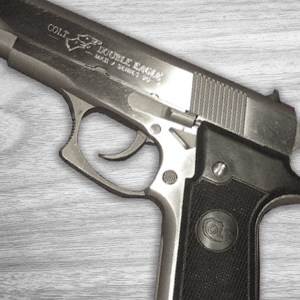 On this side of “the pond,” John Moses Browning, perhaps America’s foremost firearms inventor, was busy designing similar firearms and ammunition. For example, Browning’s machine guns included an air-cooled, belt-fed, gas-operated 450 rounds per minute 1889 model, adopted by the U.S. Army in 1895. Two other 1917 machine guns followed: the air- and water-cooled M1917 .30 caliber, and the “Ma Deuce” M2 .50 caliber heavy machine gun, still in use today. Browning’s Automatic Rifle (BAR) in .30-06 was also capable of fully automatic or semi-automatic firing.
On this side of “the pond,” John Moses Browning, perhaps America’s foremost firearms inventor, was busy designing similar firearms and ammunition. For example, Browning’s machine guns included an air-cooled, belt-fed, gas-operated 450 rounds per minute 1889 model, adopted by the U.S. Army in 1895. Two other 1917 machine guns followed: the air- and water-cooled M1917 .30 caliber, and the “Ma Deuce” M2 .50 caliber heavy machine gun, still in use today. Browning’s Automatic Rifle (BAR) in .30-06 was also capable of fully automatic or semi-automatic firing.
Browning was no slacker at handgun design, as well. He began working on a prototype semi-automatic pistol in the late 1890s to replace the revolvers in service at the time. As a result of the failure of the M1892 revolver and the .38 Long Colt round to deal with the Moros, both the U.S. Army and the Cavalry were looking for a new sidearm with more stopping power.
In 1904, seeking the parameters of this sidearm and round, Colonel Louis LaGarde of Moro rebellion fame, and Colonel John T. Thompson, he’d design the Thompson submachine gun in 1918, conducted a series of bullet tests in Chicago’s stockyards. They shot seven different bullet calibers – .30 Luger, 9mm Parabellum, .38 Long Colt, .38 Automatic Colt Pistol (ACP), blunt and hollow point .45 Long Colt, and two British rounds, the .476 Eley and the .455 Webley – into living livestock as well as some suspended human cadavers and recorded the gory effects.
“[T]he Board was of the opinion that a bullet, which will have the shock effect and stopping effect at short ranges necessary for a military pistol or revolver, should have a caliber not less than .45,” their test report says. They concluded that at close encounters well-directed rapid fire from nothing less than a .45-caliber weapon would suffice, and soldiers should be drilled to fire at moving targets until they became proficiently skilled marksmen (think shot placement). The upshot of the testing was that the military came to specify that nothing less that .45 caliber would do for military sidearms.
Meanwhile, also in 1904, Colt was working with John Browning on a .41-caliber cartridge. When the military asked for a .45-caliber in 1905, Colt and Browning modified their pistol to fire an enlarged version of the prototype .41 round. The results were Colt’s Model 1905 automatic pistol and the new .45 Automatic Colt Pistol (ACP) cartridge.
The original .45 ACP round was a 200-grain slug traveling at 900 ft/s. But after revisions by ammo makers Winchester, Frankford Arsenal, and Union Metallic Cartridge (pre-Remington), a 230-grain slug moving at 850 ft/s., became standard fodder. Performance-wise the .45 ACP round was similar to the .45 Schofield round and slightly less powerful, but shorter than granddaddy .45 Long Colt.
In 1906, the military considered bids from six gunmakers — Colt, with Browning’s design; Savage; and DWM, a German gun builder — to build the military’s new pistol. DWM dropped out. Evaluations of the Colt and Savage pistols continued through 1910, when Savage’s design failed. In 1911, Colt’s pistol was adopted as the Model 1911. For nearly three-quarters of a century, from World War I, WWII, Korea, and Vietnam through 1985, it would be the military’s standard sidearm.
Browning would go on to design additional handguns as well. In 1922, he co-designed the Browning Hi-Power, a 9mm handgun with a 13+1 capacity, another firearm well ahead of its time. Browning died in 1926, with his sons leaving a lasting legacy on U.S. firearms design and manufacturing.
The .45 ACP full metal jacket round proved itself an effective combat pistol cartridge, offering accuracy and stopping power, despite a stout, but manageable recoil. The standard-issue, military .45 ACP cartridge uses a 230-grain bullet flying at 830 fps. It would achieve a slightly higher velocity, 950 feet per second, when fired from Thompson’s “Chicago Typewriter.”
Future of .45
Despite critics’ claims that the .45s are “antiques” and should be relegated to the junk pile of historical firearms and cartridges, there are many .45s – both SAAs and their knockoffs, as well as the 1911s in .45 ACP – being used, often preferred, today.
The popularity of cowboy shooting events, for example, has done much to revive the SAA and the .45 Long Colt cartridge. Competitive cowboy action shooting includes: western-action shooting, single- action shooting, Cowboy 3-Gun, and Western 3-Gun. Its roots go back to the early 1980s in southern California, but these events now appear in many places via the Single Action Shooting Society (SASS), Western Action Shootists Association (WASA), and National Congress of Old West Shooters (NCOWS), Western 3-Gun as well as others in the U.S. and other countries. Cowboy-action shooting generally uses a combination of handguns, rifles, and shotguns with targets in Old West-themed courses monitored for time and accuracy. Participants must also dress in appropriate cowboy-era get-ups and use gear and accessories sanctioned by group rules.
 Cowboy Fast Draw is newer. Cowboy Fast Draw, LLC, was founded in South Dakota in 2002 by Brad and Susan Hemmah and has grown to be the largest fast draw organization with more than 3,000 members in 70 affiliated clubs across the U.S. and other countries. CFDA events pair two shooters who compete against each other shooting at a 24-inch circular steel target at 21 feet. The target has a light in the center, and when it comes on, both quick draw and fire. The fastest gun with the most hits wins. All shooting is done with SAA-style .45 Long Colt pistols. Cartridges are .45 Long Colt casings bored to accept 209 shotgun primers. This propels an 18-grain .45 wax bullet at 650 feet per second. CFDA says it focuses on safety, sportsmanship, and fun above competition.
Cowboy Fast Draw is newer. Cowboy Fast Draw, LLC, was founded in South Dakota in 2002 by Brad and Susan Hemmah and has grown to be the largest fast draw organization with more than 3,000 members in 70 affiliated clubs across the U.S. and other countries. CFDA events pair two shooters who compete against each other shooting at a 24-inch circular steel target at 21 feet. The target has a light in the center, and when it comes on, both quick draw and fire. The fastest gun with the most hits wins. All shooting is done with SAA-style .45 Long Colt pistols. Cartridges are .45 Long Colt casings bored to accept 209 shotgun primers. This propels an 18-grain .45 wax bullet at 650 feet per second. CFDA says it focuses on safety, sportsmanship, and fun above competition.
In addition, even as semi-auto pistols are now the go-to sidearm for most shooters, the .45 Long Colt and SAAs have remained steady-selling because they are simply reliable, and they work. Plus, the .45 Long Colt proved the genesis for spin offs other than the .45 ACP. For example, during the mid-1950s, Utah gunsmith Dick Casull began exploring the limits of .45 caliber handgun loadings. In 1959, he introduced the .454 Casull cartridge, .98 inches longer than the Long Colt case with a thicker web in the head of the case. Casull unleashed a rifle-like 1,900 fps beast in a 250-grain bullet, making this round one of the most powerful handgun cartridges in production. It’s primarily intended for hunting medium or large game, metallic silhouette shooting, and bear protection.
In 1985, the .45 ACP M1911 A1 pistol was replaced by the Beretta M9 9mm pistol as the U.S. military’s main sidearm. The Beretta was in turn replaced with the M17 SIG Sauer P320 9mm pistol in 2017. A 2007 survey discovered that about 60% of all police departments now shoot autoloader 9 mms, with most NATO military units using 9 mms, too.
However, not everyone has switched to 9 mms.
The U.S. Marine Corp never gave up on the 1911. In the late 1980s, USMC Colonel Robert Young established specifications and improvements to make Browning’s design combat-ready for 21st century. His specs produced the MEU (SOC) pistol, in .45 ACP, now in use. Also, in 2016, Colt delivered a 1911 variant to the Corps, the M45A1 Close Quarter Battle Pistol (CQPB). Its flat, desert-tan-colored Cerakote coating, an under-barrel Picatinny rail, fixed Novak three-dot night sights, and an enhanced hammer are among the improvements made.
The U.S. Army Special Operations units still favor the 1911. The Los Angeles Police Department’s Special Weapons and Tactics (SWAT) and S.I.S. units adopted a Kimber 1911 Custom II pistol in .45 ACP after it defeated others in tests as their new tactical and carry sidearm. Other police officers carry modern 1911s in .45 ACP as their sidearm, including the FBI’s Hostage Rescue Team and regional SWAT teams. And a 1911 remains a popular concealed carry weapon. So, both the 1911 and the .45 ACP and the SAA and the .45 Long Colt are far from dead.
Your Protection Starts Here!
The information provided in this publication is intended to provide general information to individuals and is not legal advice. The information included in this publication may not be quoted or referred to in any other publication without the prior written consent of U.S. LawShield, to be given or withheld at our discretion. The information is not a substitute for, and does not replace the advice or representation of a licensed attorney. We strive to ensure the information included in this publication is accurate and current, however, no claim is made to the accuracy of the information and we are not responsible for any consequences that may result from the use of information in this publication. The use of this publication does not create an attorney-client relationship between U.S. LawShield, any independent program attorney, and any individual.

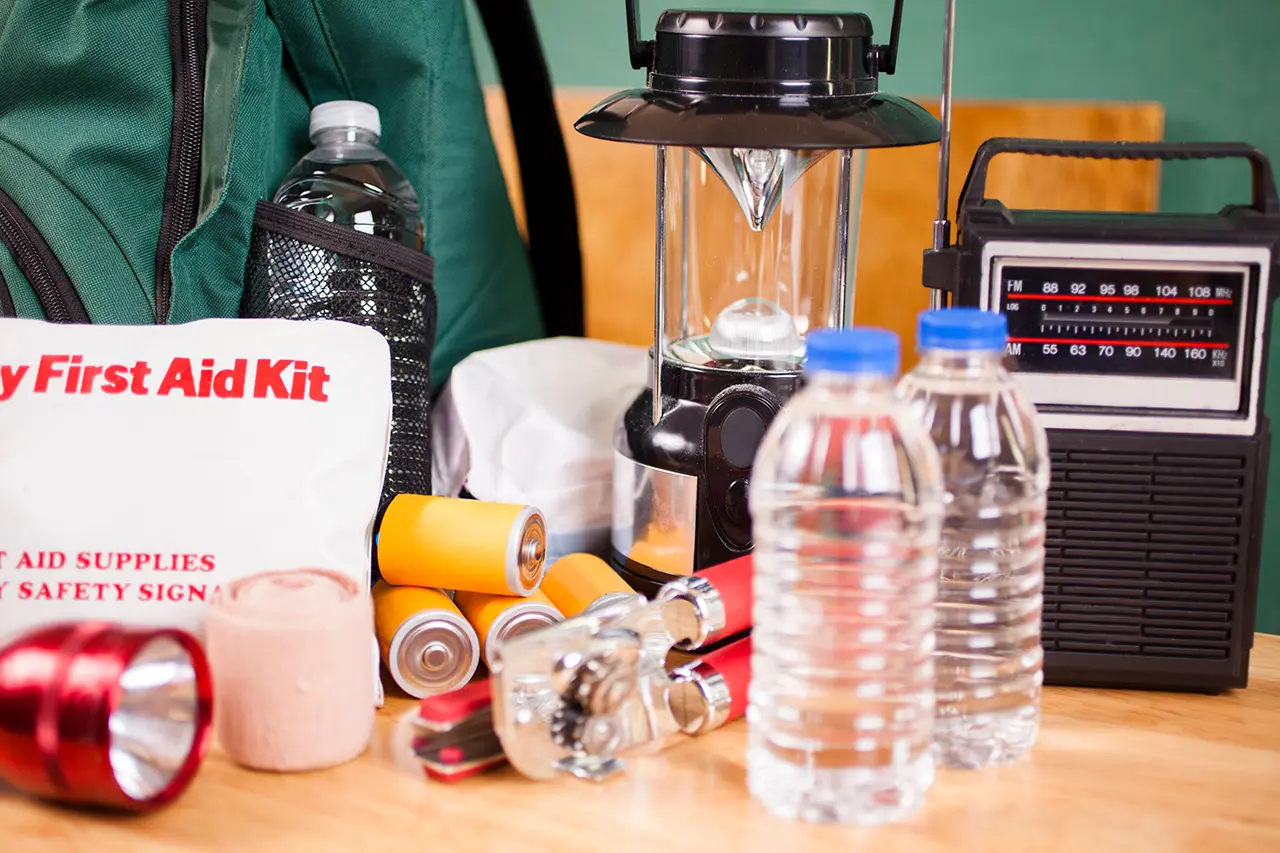
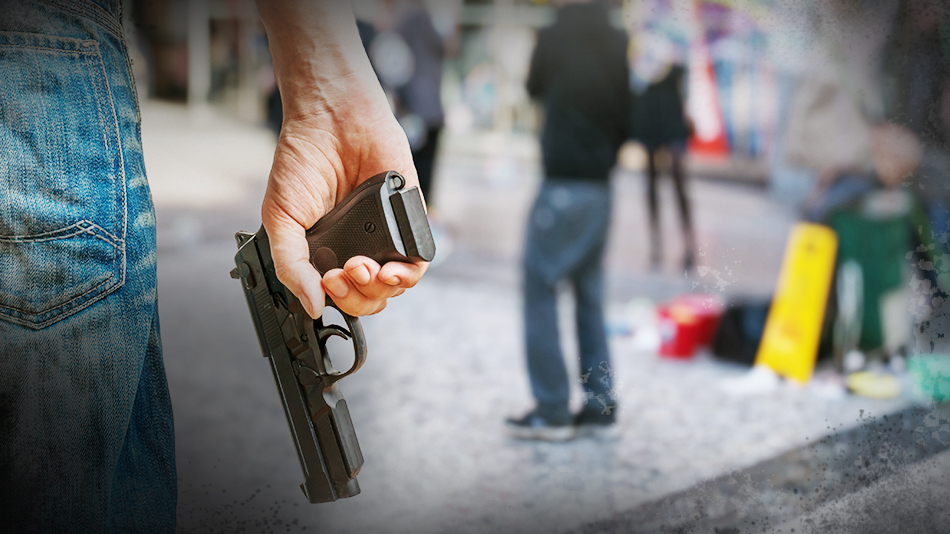
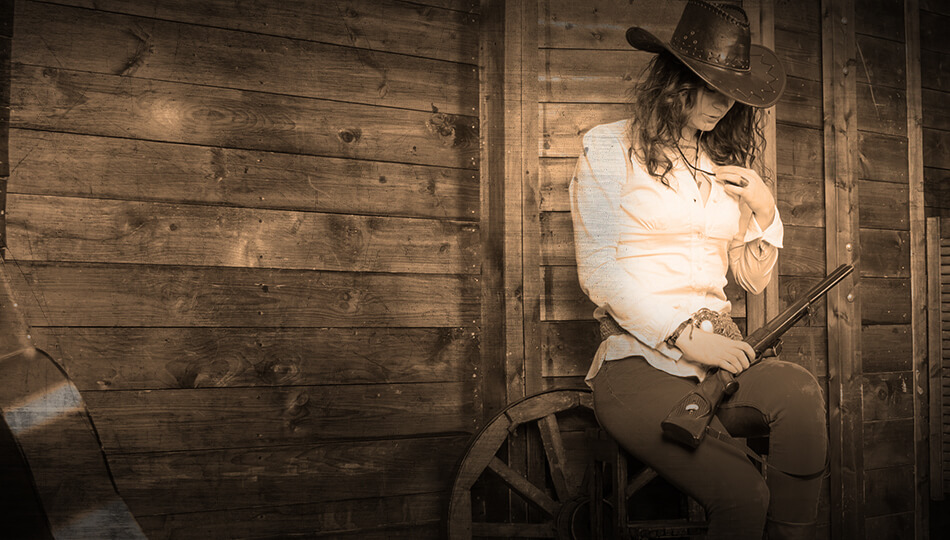

The cartridge name is .45 Colt.